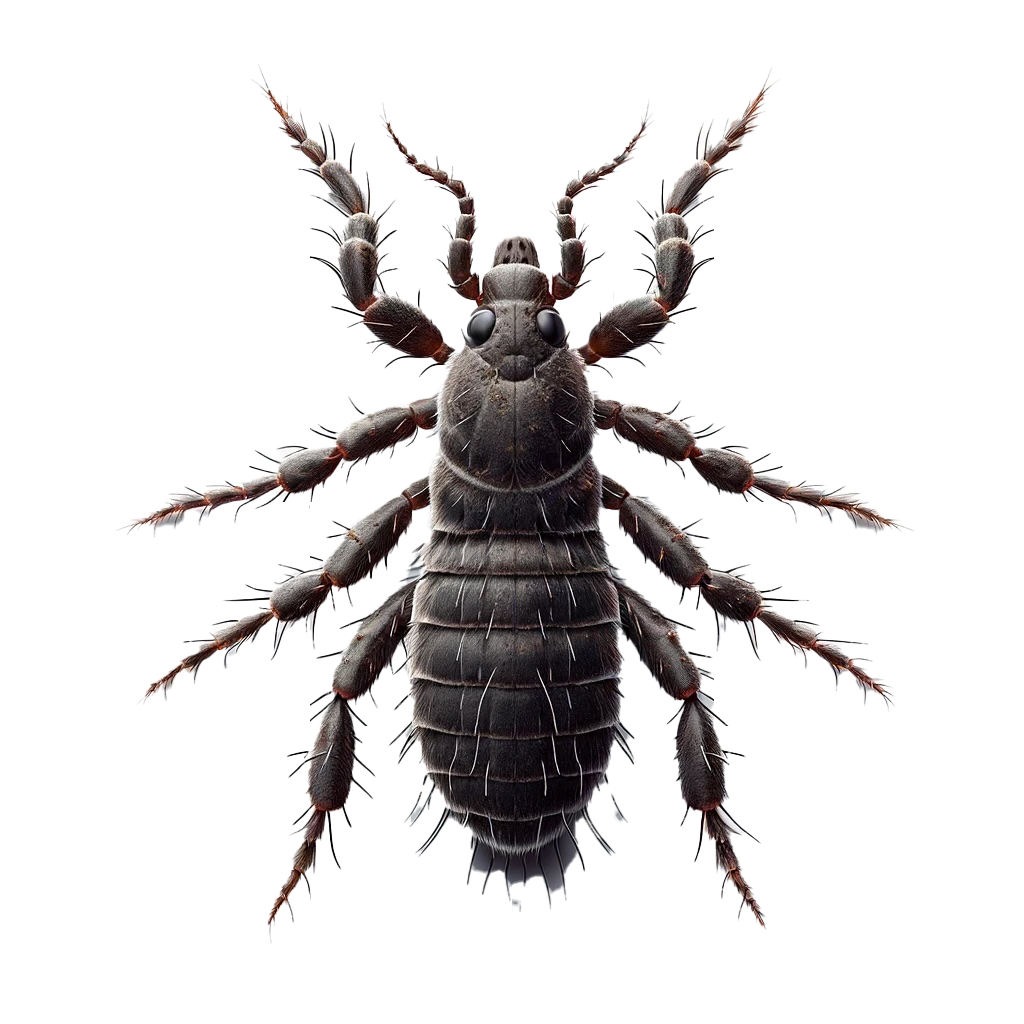All About Fleas and Mites
Fleas and mites are tiny, but they can cause big problems for homeowners and pets alike. Understanding these pests is crucial for effective control and prevention, as they can lead to discomfort, health issues, and infestations.
What are Fleas and Mites?
Fleas (Order: Siphonaptera) and mites (Class: Arachnida) are small parasitic pests. Fleas are wingless insects known for their ability to jump long distances, while mites are tiny arachnids, closely related to ticks and spiders.
Fleas primarily feed on the blood of mammals and birds, making pets a common host. Mites, on the other hand, have diverse feeding habits, with some species living off plants, while others are parasitic on animals and humans. Both pests can be found worldwide and thrive in warm, humid environments.
How to Identify Fleas and Mites
Appearance:
- Fleas: Small (2-4 mm), dark brown, wingless insects with flattened bodies and long hind legs for jumping.
- Mites: Extremely small (less than 1 mm), varying in color from white to red, with eight legs.
Images:
- [Image of a flea]
- [Image of a mite]
Similar Pests: Fleas can be confused with bed bugs due to their similar size and color. Mites can be mistaken for ticks, though mites are generally much smaller.
Activity and Seasonality
Active Seasons:
- Fleas are most active in warmer months, typically spring through late summer.
- Mites can be active year-round, depending on the species.
Lifecycle:
- Fleas: Egg, larva, pupa, and adult stages, with a lifecycle duration of about three weeks under optimal conditions.
- Mites: Egg, larva, nymph, and adult stages, with lifecycle duration varying widely among species.
Where to Find Fleas and Mites in or Around Your House
Common Habitats:
- Fleas: Often found in pet bedding, carpets, and upholstered furniture.
- Mites: Can be found in various places, including dust (dust mites), on pets (ear mites), or on plants (spider mites).
Specific Hiding Spots:
- Fleas: Pet fur, cracks in flooring, and baseboards.
- Mites: Mattress seams, furniture, and pet bedding.
How to Get Rid of Fleas and Mites
Immediate Action:
- For fleas, bathe pets and wash their bedding. Vacuum carpets and furniture thoroughly.
- For mites, identify the type of mite to target treatment. Clean and vacuum affected areas and wash all bedding.
Professional Treatments: Professional pest control services can offer treatments like Pest Control Consultants – PCC for fleas and specialized acaricides for mites.
DIY Methods:
- Fleas: Use flea combs on pets, apply diatomaceous earth to carpets, and use flea traps.
- Mites: Maintain low humidity levels, use mite sprays, and regularly wash bedding at high temperatures.
How to Prevent Fleas and Mites
Preventive Measures:
- Regularly groom and check pets for fleas and mites.
- Keep home environments clean and dust-free.
Home Maintenance:
- Vacuum regularly and wash pet bedding frequently.
- Use protective covers on mattresses and pillows to prevent dust mites.
Long-term Strategies:
- Implement regular pest control inspections and treatments.
- Maintain a clean and hygienic living environment to deter infestations.
Suggested Blog Posts
- Signs Of A Flea Infestation In Your St. Charles Home
- Eliminate Fleas For Good: Effective Control Methods For Homes In Kittitas County
Conclusion
Fleas and mites, though small, can create significant problems in homes. Proper identification, treatment, and prevention are essential to managing these pests effectively.
If you’re dealing with a flea or mite infestation, contact Pest Control Consultants today for a free consultation and effective treatment plan. Our experienced team is here to help you reclaim your home from these pesky invaders.
Contact Us